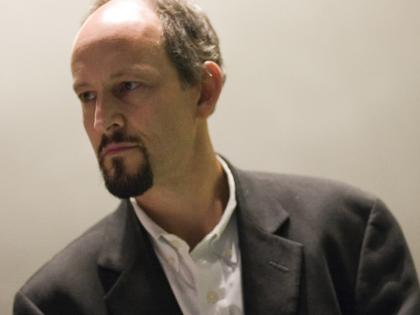Of all the carbon dioxide (CO2) emitted into the atmosphere, one quarter is taken up by land plants, another quarter by the oceans. Understanding these natural mechanisms is important in forecasting the rise of atmospheric CO2 because even though plants and bodies of water now absorb surplus greenhouse gas, they could become new trouble spots. The ocean absorbs CO2 from the atmosphere in an attempt to reach equilibrium by direct air-to-sea exchange. This process takes place at an extremely low rate, measured in hundreds to thousands of years. However, once dissolved in the ocean, a carbon atom will stay there, on average, more than 500 years, estimates Michael McElroy, Butler professor of environmental science.
Besides the slow pace of ocean turnover, two more factors determine the rate at which the seas take up carbon dioxide. One is the availability of carbonate, which comes from huge deposits of calcite (shells) in the upper levels of the ocean. These shells must dissolve in ocean water in order to be available to aid in the uptake of CO2, but the rate at which they dissolve is controlled by the ocean's acidity. The ocean's acidity does rise with increased CO2, but the slow pace of ocean circulation prevents this process from developing useful momentum. It takes a long time for the increased acidity to reach the vulnerable calcite deposits, to dissolve them, and then to bring the carbonate cations to the surface where they can combine with CO2 in the surface waters of the ocean. There is no hope, says McElroy, that this process will take place fast enough to help control the build-up of CO2.
Another process, called "the biological pump," transfers CO2 from the ocean's surface to its depths. Warm waters at the surface can hold much less CO2 than can cold waters in the deep. "This is the 'soda bottle on a warm day' effect," says Agassiz professor of biological oceanography James McCarthy, "and is not unique to carbon dioxide; it applies to all gases dissolved in water. There is a higher capacity to hold a gas with a lower temperature than with a higher temperature." This means that when deep ocean waters rise to the surface as part of normal ocean-circulation patterns, the water heats up and actually releases CO2.
The biological pump works in the opposite direction. One-celled plants, the remains of organisms that feed on them, and fecal matter sink, by force of gravity, into the deep ocean. This phenomenon was first described in the late 1800s by Harvard's Alexander Agassiz, who referred to it as the "rain of detritus." Its effect is to pull carbon out of the upper ocean and cause it to rain down into the depths, where bacteria and other organisms metabolize and release it back into the water as CO2, enriching carbon dioxide in the deep ocean. (Either way, the chance is very small that a carbon atom in the ocean will be incorporated into organic matter or chemically combined with a carbonate cation to form calcium carbonate that will end up sequestered in sediments, where it might remain for hundreds of millions of years.)
For complex reasons, the fertilization effect of CO2 (see "The Great Carbon Sink," page 36) does not stimulate biological production in the oceans as it can on land. What regulates these plants' growth is light (of which there is plenty near the surface) and the availability of nutrients. Patterns of circulation control both these parameters. For example, plankton does not thrive in sinking water masses such as those found deep in the North Atlantic, because it is pulled down and away from the light. Similarly, warm surface waters don't hold much in the way of nutrients such as nitrogen and phosphorus. What these plants require is an upwelling of cold, nutrient-rich waters from lower levels of the ocean, and then a particular stratification of waters of different temperatures, in order to thrive.
"These upwellings follow natural cycles," says McCarthy, "which is why there are seasonal blooms of plankton in different places near ocean-circulation features. Here in New England, we see a spring bloom off Georges Bank that feeds the great cod and haddock fisheries." Nobody knows how climate change will affect currents, stratification, and nutrient supply. "But to say that the ocean will continue working just the way it is, and that the biological pump will continue to work the way it does at presentÑthis is sophistry," says McCarthy. "We know that it will not."






